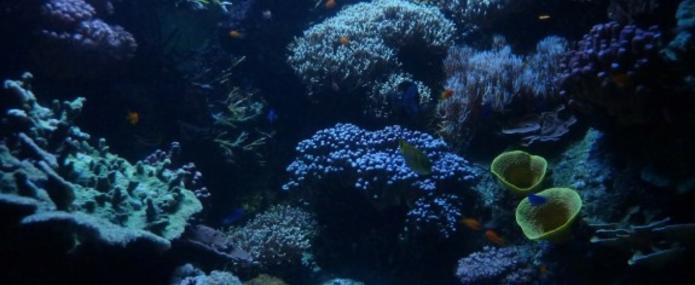The first recorded medicinal use of marine species dates from almost 3000 BCE in China. In 400 BCE, Hippocrates noted the antibiotic properties of sponges and recommended they be applied to soldiers' wounds. Today, scientists and companies are racing to discover the medicines of the future, while States are negotiating a cooperative framework.
Patents on ocean life
Genetic information extracted from the marine environment⏤“marine genetic resources” (MGRs)1 ⏤is already being used to develop a variety of medicines and cosmetics. Enzymes from sponges, for example, have been used to cure different types of cancer, microbial infections and inflammation2, 2 , while algae are widely used in cosmetic products3 . Recently, scientists have used enzymes isolated from a microbe found in hydrothermal vents to test for viruses (such as the coronaviruses)4 and compounds from red algae could potentially be used to treat different types of the coronavirus.5
Currently, just three countries account for almost three quarters of patents based on MGRs⏤Germany (49%), the United States (13%) and Japan (12%)6 ⏤which raises equity issues.7 It is however difficult to quantify the nature and scale of the potential market value of MGRs. The process towards the commercialisation of MGRs is costly, challenging, and can take several years. Nonetheless, the value of genetic material is “not just economic, but also ecological, environmental, scientific and social”.8
Organisms living on deep-sea hydrothermal vents are of particular interest to investigators, as they have evolved unique adaptations and symbiotic relationships to survive in extreme environments where high temperature, pressure and chemical concentrations make life seemingly impossible.9 Many of these “extremophiles” live in the deep and distant waters that lie beyond the legal jurisdiction of any State. While the use of genetic resources collected within a State’s national waters is regulated by the Nagoya Protocol to the Convention on Biological Diversity (CBD), the legal status of MGRs collected in areas beyond national jurisdiction (ABNJ) is currently unclear.
Fair and equitable sharing of benefits
A “Constitution for the ocean”, the United Nations Convention on the Law of the Sea (UNCLOS, 1982) sets out the basic rights and obligations of States in ABNJ. As MGRs and their potential commercial uses were not well-understood at the time UNCLOS was negotiated, “bioprospecting”10 is not explicitly covered by the Convention. Since 2017, States at the United Nations have been negotiating a new treaty for the conservation and sustainable use of biodiversity in ABNJ and the legal status of MGRs has been a key point of contention.
On the one hand, some industrialised States, such as the United States and Japan, consider exploitation of MGRs to fall under the “freedom of the high seas” principle, i.e. access and use of MGRs is open to all on a “first come, first served” basis. On the other hand, many developing States argue that MGRs, like seabed minerals in ABNJ, fall under the Common Heritage of Mankind (CHM) principle, thus requiring exploitation to be conducted for the benefit of all. Some States, particularly the members of the European Union, have sought to bridge the ideological divide by calling for concrete discussions on a benefit-sharing mechanism.
In the latest draft treaty text, the Common Heritage of Mankind is included as an option as part of the general principles and approaches of the treaty, but is not mentioned in the chapter on MGRs. Regardless of whether this concept will be integrated in the text, it appears that States are trying to establish a global standard of fairness and equity in the utilisation of MGRs. The negotiations have now taken a pragmatic approach that focuses on the practicalities of access and benefit-sharing obligations, although many questions remain unresolved.
There is for instance no consensus on a range of foundational provisions, such as how MGRs should be defined and whether the scope of the treaty will include derivatives. Questions also abound in relation to the eventual mechanisms for sharing the benefits: Should benefit-sharing be mandatory or voluntary? Does this include monetary as well as non-monetary benefits, such as access to samples and the sharing of information? When should benefit-sharing obligations be triggered? Who should be responsible for the monitoring of the utilisation of MGRs? How can the future treaty ensure the implementation of benefit-sharing provisions? How can traditional knowledge be taken into account? Who should benefit from benefit-sharing arrangements when considering there are no “providers” of MGRs in ABNJ but only users and non-users?
Preserving marine scientific research
Whatever common answer States decide to give to these aforementioned questions, the new high seas biodiversity treaty will undoubtedly shape the future of marine biotechnology, both from a commercial as well as a research perspective.11 In this regard, some scientists have expressed concern that the outcome of the negotiations on the access and benefit sharing regime for MGRs in ABNJ could constrain future research in case the final text will, for example, include obligations to obtain permits and share data or other benefits.12 Another major issue that diplomats will have to address when finalising negotiations on this complex and multifaceted topic.
- 1There is no universally accepted definition of MGRs, but they are considered to be a subset of “genetic resources” as defined by the Convention on Biological Diversity (CBD): “genetic material of actual or potential value”. The CBD defines “genetic material” as: “any material of plant, animal, microbial or other origin containing functional units of heredity”. https://advances.sciencemag.org/content/4/6/eaar5237.full
- 2a2bhttps://www.sciencedaily.com/releases/2007/09/070903204947.htm; https://www.ncbi.nlm.nih.gov/pmc/articles/PMC4930278/
- 3 https://www.mdpi.com/2079-9284/4/3/35/htm#B2-cosmetics-04-00035
- 4https://www.whoi.edu/news-insights/content/finding-answers-in-the-ocean/
- 5https://www.nature.com/articles/d41586-020-00912-w; https://www.nature.com/articles/nrd.2015.37
- 6https://advances.sciencemag.org/content/4/6/eaar5237.full
- 7https://pubs.iied.org/pdfs/17462IIED.pdf
- 8https://brill.com/view/journals/ocyo/33/1/article-p377_377.xml
- 9https://www.sciencedirect.com/science/article/pii/S0141113614000506
- 10There is no universally agreed definition of “bioprospecting” because there are different views as to whether it extends beyond sample extraction towards the commercialisation of biotechnology and because it is difficult to distinguish between pure scientific research and more commercially focussed research on product development. Leary et al (2009), Marine Genetic Resources: A Review of Scientific and Commercial Interest.
- 11https://oceanpanel.org/sites/default/files/2020-04/The%20Ocean%20Genome%20Ocean%20Panel%20Blue%20Paper.pdf
- 12https://www.nature.com/articles/d41586-020-00912-w




